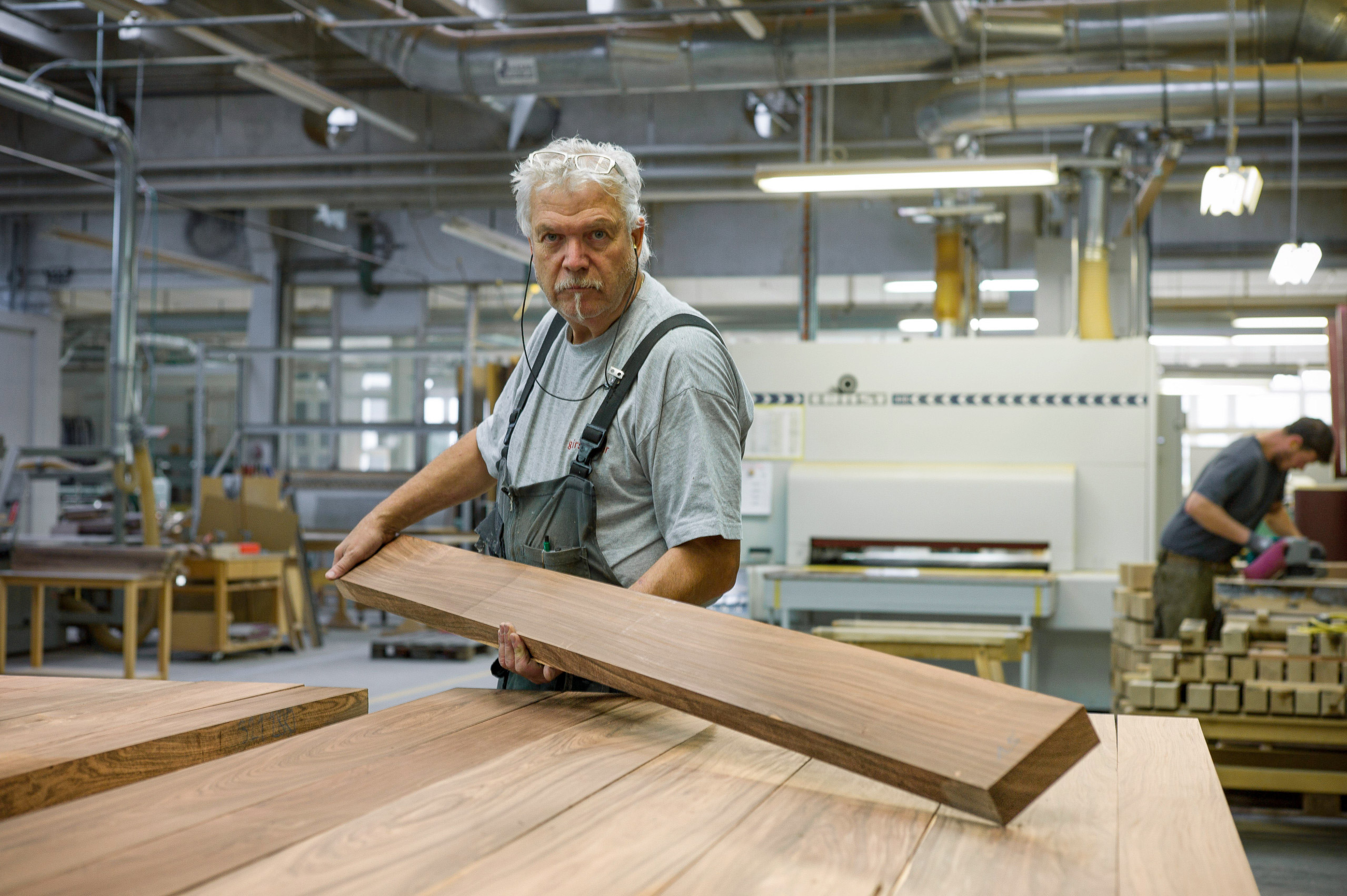Our skills, the craftsmanship combined with a lot of heart and soul, sensual perception and a sense of proportion are at the heart of what we do and our value-added chain. With the processing into a table, a tree is given a second life: its character and life story become visible and tangible.
Using and processing wood are among the oldest crafts in existence. At Girsberger, we still practice the trade of joinery in its purest form – working with solid wood.

When an order is received, staff in the joiners’ workshop select the required wood and assemble the planks from a tree trunk to form a tabletop. The interplay of colours and wood grain is taken into account, resulting in a harmonious image.
At the end of the manufacturing process come the fine sanding and finishing.
A design concept is born in the mind, the enthusiasm for it and the love of materials comes from the heart, and skilled hands ultimately lead to the finished work. The successful creation is an expression of an overall human accomplishment that optimally combines all these talents and skills.
We offer our private customers the very special experience of helping to select the wood and boards for their own table at our workshop in Bützberg (Switzerland). Find out more about this opportunity.










